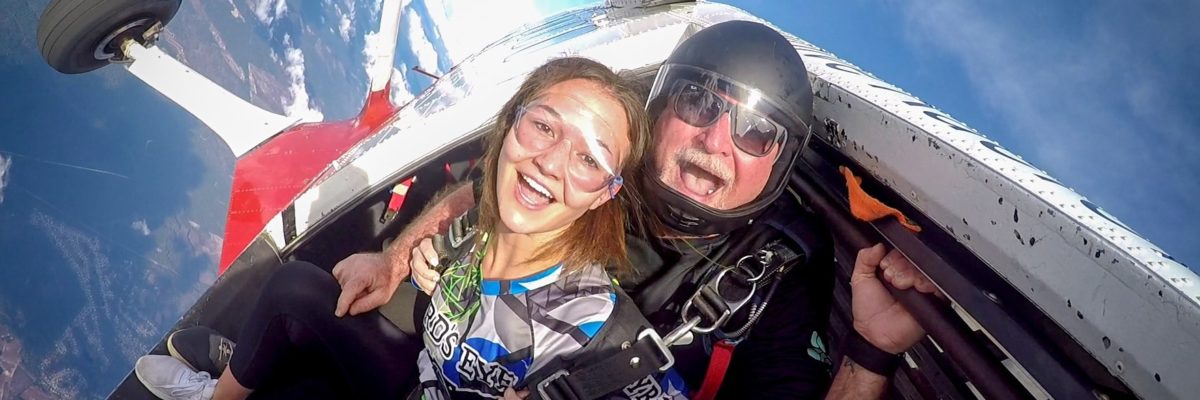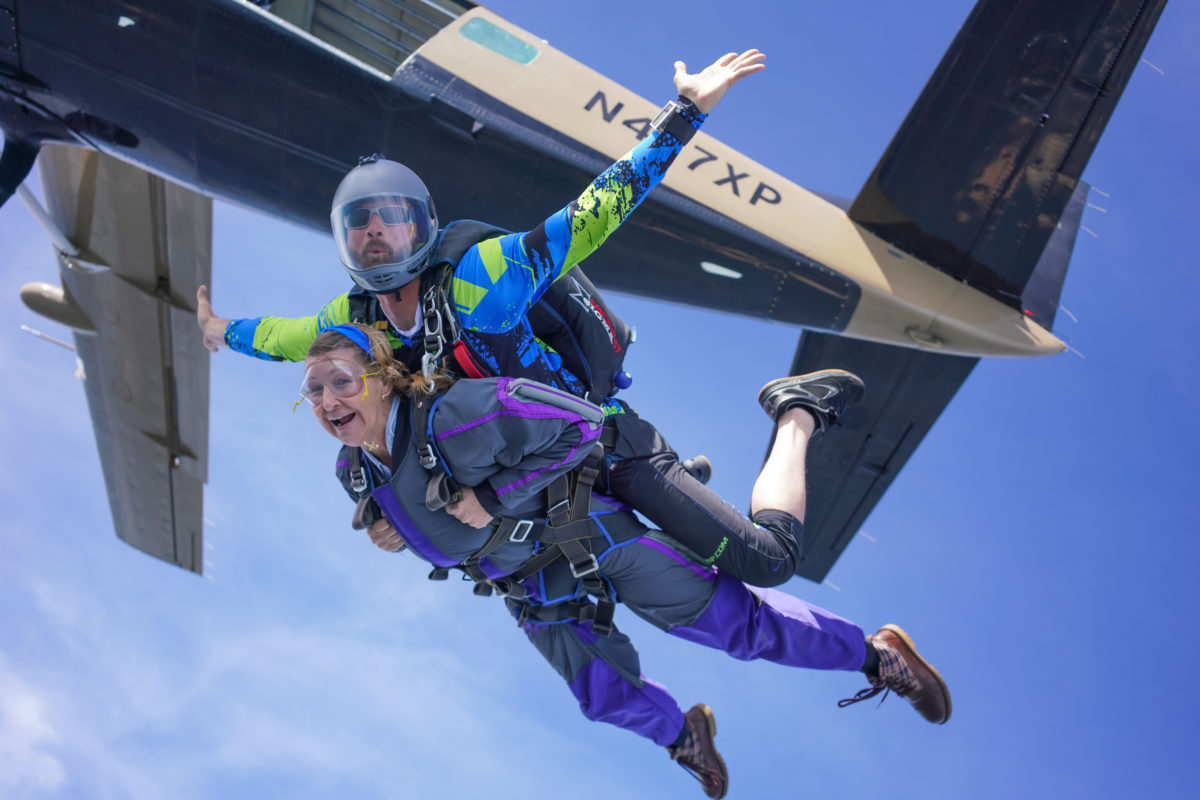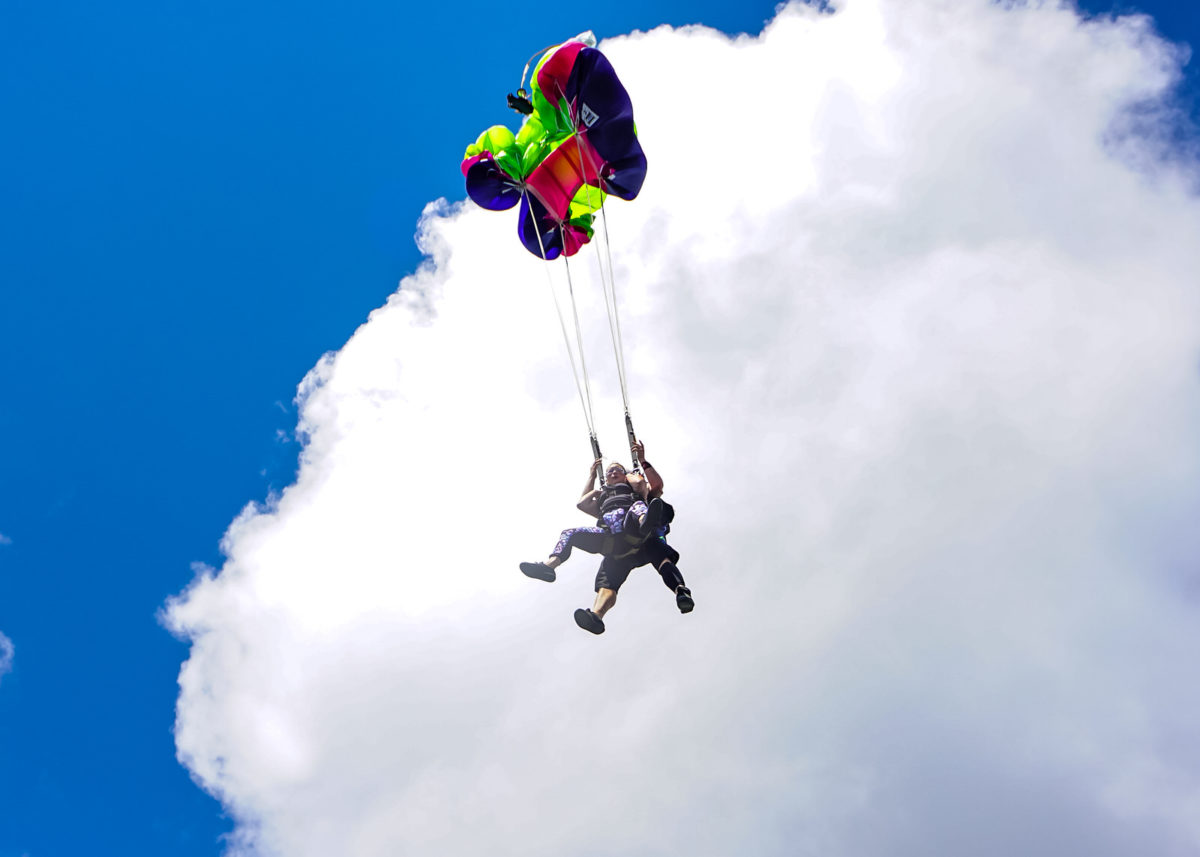
5 Skydiving Myths: DEBUNKED!
Tuesday, February 25, 2025
- Team FlyXP
- 2/25/25
- 0
- General, Skydiving Myths
It’s hard to know what’s real and what isn’t sometimes — especially when it comes to jumping out of airplanes mid-flight. Skydiving is a niche sport, and a lot about it remains unknown until you start getting involved. We’re here to help set the record straight and debunk some of the most popular myths about skydiving
1. “I don’t like roller coasters, so I won’t like skydiving.”
“Does your stomach drop when you skydive?” This is one of the most popular questions we hear. People assume that jumping out of an airplane will give them that stomach-drop feeling, like a roller coaster. However, that sensation happens when you experience a sudden drop from a stationary object, like when a roller coaster pauses at the top of a hill before plunging down. Since the plane is already moving forward at high speed, you don’t experience that drop — you transition smoothly into freefall. No stomach in your throat!
Tip: Look out at the horizon. If your instructor does spins in freefall or under the canopy and you start feeling dizzy, keep your eyes on the horizon instead of looking straight down. This helps stabilize your perspective.
2. “It’s hard to breathe.”
Can you breathe while skydiving? Absolutely! The biggest reason people feel like they can’t is adrenaline. Your first skydive can be an intense experience, and sometimes nerves make people forget to breathe properly. While 120 mph winds will be rushing at your face, they don’t stop you from inhaling. If anything, people tend to hold their breath without realizing it.
So, how do you breathe when skydiving? Relax, consciously think about exhaling, and remember – you’re here to have fun!
Tip: If you feel like you can’t breathe, scream! This forces you to exhale, resetting your breathing rhythm so you can take a deep breath again.

3. “I’m not an adrenaline junkie, so I won’t like it.”
You’d be surprised to learn that most skydivers are not adrenaline junkies. Sure, you’ll meet some who love the rush, but the majority – especially those who stick with the sport long-term – are here for completely different reasons. Skydiving can be quite meditative. When you’re skydiving, you’re not thinking about your to-do list, work stress, or whether Ross and Rachel were really on a break. You’re fully in the moment.
But how scary is skydiving? The anticipation leading up to the jump is often the scariest part. But once you leave the plane, most people are surprised to find that it doesn’t feel like falling, it feels like floating. The overwhelming sensation isn’t fear; it’s exhilaration, freedom, and in-the-moment presence.
And then there’s the canopy ride — floating peacefully under the parachute with a bird’s-eye view of the world, watching the sunset from a perspective few ever experience. The sport also offers endless opportunities for personal growth, skill progression, and an incredible sense of community. It’s about way more than just the adrenaline rush.
Tip: Surprise yourself — try it! You might discover a whole new passion.
4. “You go up when the parachute opens.”
You’ve probably watched skydiving videos where it looks like the tandem pair gets yanked back up into the sky when the parachute deploys. But that’s not exactly what’s happening. Tandem skydivers deploy their parachutes at a higher altitude for safety, while videographers continue freefalling for a few extra seconds. This makes it look like the tandem pair is going up when, in reality, the videographer is just still falling.
What actually happens? The parachute slows your descent, but you never go in reverse.
Tip: Smile for the camera even during deployment — you’ll get some awesome footage!

5. “Parachute failures are common.”
Many newcomers worry that parachute failures are common. While they are possible, they are rare. Every skydiving rig is built with redundancy, including both a main and a reserve parachute. If the main parachute doesn’t deploy or perform as intended, the instructor can cut it away and activate the reserve.
Skydiving equipment also incorporates multiple layers of safety. An Automatic Activation Device (AAD) is designed to deploy the reserve parachute automatically if a skydiver is falling too fast at a lower altitude.
A common concern we hear is, “what happens if my instructor passes out?” While this scenario is highly unlikely, the AAD is in place to deploy the reserve if necessary, providing an additional safeguard.
Tip: Reading up on the safety measures skydiving facilities implement can help you feel more confident before your jump.
Final Thoughts
So, what are the negatives of skydiving? We can’t think of many … The only real downside? We’re at the mercy of Mother Nature. If the weather isn’t right, we wait — but trust us, when you finally get to jump, it’s 100% worth it!
Skydiving is full of surprises, and most of the myths surrounding it don’t hold up once you take the leap. Whether you’re worried about breathing, concerned about the parachute, or convinced you won’t enjoy it because you’re not a thrill-seeker, the reality is far different from the misconceptions. The best way to know what’s real? Try it for yourself and book today!
Copyright © 2025, Skydive Paraclete XP, All Rights Reserved.
DropZone Web Design & Marketing by Beyond Marketing, LLC
